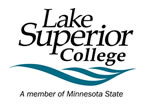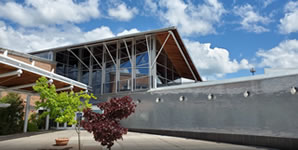Part 1: Purpose
The purpose of this procedure is to provide standard guidelines in naming major buildings, sites, and common areas.
Part 2: Minnesota State Criteria
- Major buildings, sites, and common areas will not be named for individuals while they are employed by or officially involved with LSC. These facilities may be named after such persons no earlier than one year following the conclusion of their relationship with the college.
- When names of individuals are used that individual should meet one of the following criteria:
- Former elected or appointed state government official instrumental in the development of the college.
- Former member of the Minnesota State Board of Trustees or the college’s advisory committees.
- A former employee who has made an outstanding contribution to the college.
- A citizen who has provided significant leadership for and service to the college.
- A graduate or former student of the college who has achieved distinction in scholarship, creative arts or public service.
- When names other than those of individuals are used, the recommendation shall conform to recognized standards of propriety.
- The proposed building, site, or common area name should not readily lend itself to unwanted abbreviations, acronyms or nicknames. The recommendation, which must include an explanation of the consultation and review process used shall be forwarded to the chancellor for approval.
Part 3: Lake Superior College (LSC) Process
Subpart A: Establishment of a Campus Naming Committee
- The college president shall establish a “Naming Committee” with standing members composed of one faculty representative, one staff representative, one student, one member of the LSC Administrators Council, and one LSC Foundation representative. This committee shall be convened at the request of the President when a naming opportunity occurs. Some portion of the college representation, whether students or employees, should consist of persons involved with the location or operation of the area or subject matter to be named. For example, naming of areas, classrooms, or labs in the science building should include input from Health and Science faculty and students.
- The naming of a building, site, common area or conference space is complex and requires diplomacy, sensitivity and significant judgment. The Naming Committee shall consider proposals with cautious perspective and not assign names indiscriminately or allow the positive impact to become trivialized.
- The committee shall consider all Minnesota State Board policies, System procedures and other factors relevant to naming.
- Prior to making a final recommendation to the college president, the committee shall seek input and feedback from the campus community through surveys, presentations, or other means of communication, including formal notification through Shared Governance and Meet and Confer.
Subpart B: Naming Recognition
- The naming of college facilities offers a unique way to acknowledge the philanthropic support of education and allows Lake Superior College (LSC) to thank and recognize donors – whether they are individuals, families, corporations, foundations, or organizations – with a lasting tribute. Naming of LSC buildings, sites, common areas and LSC programs may occur to:
- Recognize an individual, who through exemplary personal, professional or civic endeavors has had a significant, lasting and memorable impact on the institution,
- Recognize significant historic contributions to the college, state, nation, or world,
- Recognize a business or other entity that has had significant impact on the LSC campus, or
- Provide funding for a physical facilities project, including construction or renovation of a facility or site.
Subpart C: Giving Standards
The giving standards set forth are guidelines. In establishing and approving gift amounts, the college will maintain consistency in gift amounts required for naming while at the same time being aware that different constituencies have different giving capacities and that projects vary in regard to visibility and perceived prestige.
1.Construction Projects
- Newly built, privately funded facilities may be considered for naming as designated by the donor with a gift of at least two-thirds of the total project cost.
- Newly built, state funded facilities may be considered for naming with a gift of fifty-one percent of the total project cost. These amounts do not include fitting out costs beyond the physical plant.
2. Renovated Facilities
Renovation projects of at least $200,000, may be named with a gift of at least fifty-one percent of the total project cost.
3. Open Spaces, Common Areas, Gardens, and Gathering Places
- The naming of outdoor locations is available if a sufficient financial contribution is received to underwrite a minimum of fifty-one percent of the cost of creating and maintaining such an area. The college administration and maintenance staff shall determine if the maintenance of such a site is not excessive or deemed unwise.
- Unrestricted Gift Recognition – With the donor’s permission, the college may choose to recognize donors who make unrestricted gifts or other significant capital gifts by naming physical spaces in honor of these donors. This recognition is appropriate even though the donor’s gift did not directly support the project in which they are honored.
- The college may also choose to name these areas in recognition of significant institutional leadership, community leadership, or other leadership deemed appropriate.
4. Laboratories and Classrooms
- Initial naming of existing laboratories for a period of three years, may be named with a gift of at least fifty-one percent of the cost of new equipment for the lab or a gift of seventy-five percent of the construction of new lab facilities (based on the cost per square foot of constructing the new facility).
- A commitment to upgrade the lab equipment at fifty-one percent of the total cost every three years for 6 years (equivalent to nine years total naming commitment) will maintain the naming rights for the donor.
- New classrooms may be named with a gift of at least seventy-five percent of the cost of construction based on the cost per square foot.
5. Conference Rooms
New conference rooms may be named with a gift of at least seventy-five percent of the cost of construction based on the cost per square foot.
Subpart D: Agreements
Upon approval of a naming proposal, the donor, administrators, and Foundation officials must complete a gift contract previously reviewed and approved by the President. Consideration taken into account in this contract includes:
- The life expectancy of the building, equipment, rooms, etc.,
- Possible name change if donor is corporate or a change in a family situation occurs, or
- Termination of the educational program or decommissioning of the named space or structure.
Multi-year pledge agreements can occur, but the administration can defer the start of the project until a set amount of the contribution is received. Normally, prior to any donor recognition or naming ceremony, a minimum of seventy-five percent of the gift should be received.
Subpart E: Transfer of Names
The function of structures and/or programs on any college campus is fluid, depending on many factors. If the named structure or program is terminated or decommissioned, the name may or may not be transferred. At the time of replacement, if any, the original donor would be notified if possible and would have the first right of refusal to provide a new gift to continue the naming opportunity, in accordance with the existing naming policy.
Subpart F: Signage
Signage for named buildings or spaces must be consistent with the signage policy established for signage throughout the campus as well as coordinate with signage for similar projects.
Procedure History
Date of Implemented: February 1, 2007
Date of Review/Revisions: June 14, 2021
President’s Signature Date: September 16, 2021



